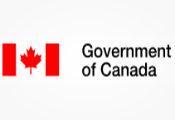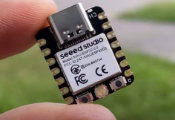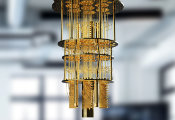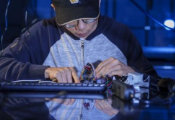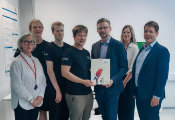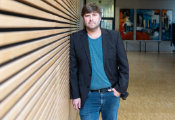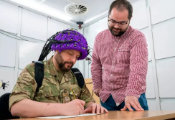Waterloo Researchers Achieve Breakthrough in Protecting Qubits During Quantum Measurements
September 23, 2024 -- Quantum information is fragile and often difficult to protect during experiments. Protecting qubits from accidental measurements is essential for controlled quantum operations, especially during state-destroying measurements or resets on adjacent qubits in protocols like quantum error correction. Current methods to preserve atomic qubits against disturbances can waste coherence time, extra qubits, and introduce errors.
University of Waterloo researchers have successfully demonstrated the ability to measure and reset a trapped ion qubit to a known state without disturbing neighbouring qubits just a few micrometres away — a distance smaller than the width of a human hair, which is about 100 micrometres thick.
The demonstration has the potential to significantly impact future research in the field, including advancing quantum processors, enhancing speed and capabilities for tasks like quantum simulations in machines that already exist today, and in implementing error correction.
This breakthrough was achieved by a team led by Rajibul Islam, a faculty member at the Institute for Quantum Computing (IQC) and professor in the Department of Physics and Astronomy, along with postdoctoral fellow Sainath Motlakunta and students in their research group.
By precisely controlling the laser light used in these operations, they overcame what was once considered an impossible challenge: protecting qubits while measuring others at such close distances.
Since 2019, Islam and his team have been trapping ions used in quantum simulation in the Laboratory for Quantum Information. This new demonstration is the next step from a breakthrough using programmable holographic technology from the group in 2021, and combined with an ion trap, proved it is feasibly possible to manipulate and destroy just one qubit.
“We have used the holographic beam shaping technology, combined it with our ion trap and demonstrated it is indeed possible to destroy any specific qubit you want while maintaining the quantum information in the other qubits that you don't want to destroy,” Motlakunta says.
Students in the group used quantum theory to calculate how well light can be controlled and demonstrated the error is, in fact, lower than researchers originally thought. Focusing on destructive qubit manipulation, which destroys the state of a qubit,“mid-circuit” measurement is used to measure the state of qubits in a chain — a challenging process due to the proximity of the ions. Next, a laser beam is directed to manipulate the target qubit in a chain of qubits. Researchers must ensure that laser light doesn’t affect nearby ions just a few micrometres away, requiring extreme precision to minimize a range of interfering effects known as crosstalk.
“Trapped ion qubits are measured by using laser beams tuned to specific atomic transitions,” Islam says. “The target ion scatters photons in all directions during this process. Even with perfect control over light, there is still a risk that these scattered photons could disturb the quantum states of nearby qubits, which limits how well we can protect them.”
That is where the group’s holographic technology — one of the most precise technologies used for controlling light — came into the picture to be able to precisely target and control the laser light.
The group achieved more than 99.9 per cent fidelity in preserving an “asset” ion-qubit while a neighboring “process” qubit is reset, and more than 99.6 per cent preservation fidelity while applying a detection beam on the same neighboring qubit for 11 microseconds, which is the shortest measurement duration which was demonstrated by another research group.
The process of measuring a qubit without disturbing others is so fragile that in a few experiments elsewhere, where this is possible, they move the other qubits many hundreds of microns away to protect them. The process of moving qubits adds delay and noise to experiments.
“It's something that was considered to be impossible,” Islam says. “When I thought about it, why can I not just go and measure one qubit without moving anything? Pretty much everybody in our field said it was a bad idea and to not even try because it's so fragile. Part of this work is getting out of this mindset, that it is so destructive that this process cannot be attempted. What we realized that for all practical levels of errors, it's how well you can control this light and how much intensity you can suppress at the surrounding qubit — the bottleneck in all these measurements.”
The group's approach of using mid-circuit measurements and resets with controlled light can be combined with other strategies, like moving the important qubits away from the active ones or hiding quantum information in states that the measurement laser does not affect, to further reduce errors.


